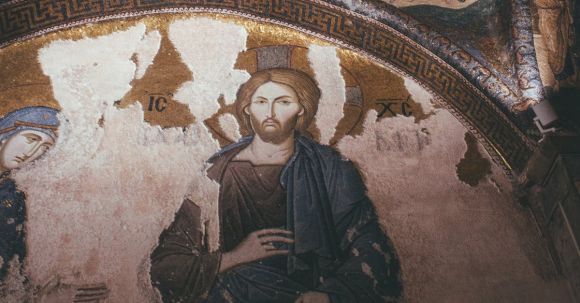The Renaissance period was a time of great artistic and cultural growth in Europe. Artists during this era produced some of the most iconic and influential paintings in history. These artworks often contained a rich tapestry of symbolism, which was used to convey deeper meanings and messages. In this article, we will explore the fascinating world of symbolism in Renaissance paintings and uncover the hidden messages behind these masterpieces.
Religious Symbolism: A Window into the Divine
Religion played a central role in Renaissance society, and it is no surprise that religious symbolism permeated many artworks of the time. Paintings often depicted biblical scenes and figures, with each element carrying a symbolic meaning. For example, the Virgin Mary was frequently portrayed wearing a blue robe, symbolizing her purity and devotion. The use of halos around holy figures represented their divine nature, while angels were depicted with wings to signify their heavenly status.
Mythological Symbolism: Unveiling Human Virtues and Vices
In addition to religious symbolism, Renaissance artists also drew inspiration from classical mythology. These mythological references were used to convey moral messages and explore the human condition. For instance, the story of Apollo and Daphne was often depicted in art to represent the fleeting nature of beauty and the consequences of unrequited love. The figure of Medusa, with her snake-like hair, symbolized the dangers of vanity and arrogance.
Animal Symbolism: A Language of Metaphors
Animals were frequently used as symbols in Renaissance art, each carrying its own metaphoric significance. The lamb, for example, was a common symbol of innocence and purity, often representing Christ himself. The lion, on the other hand, symbolized strength and courage, often associated with kings and rulers. Birds, such as the dove, symbolized peace and the Holy Spirit, while serpents represented temptation and evil.
Floral Symbolism: A Language of Beauty and Transience
Flowers held significant symbolic meaning in Renaissance paintings. Each type of flower conveyed a different message, adding layers of depth to the artwork. The rose, with its delicate petals, represented love and passion, while the lily symbolized purity and chastity. The sunflower, with its face turned towards the sun, represented loyalty and devotion. These floral symbols not only added beauty to the paintings but also conveyed deeper emotions and ideas.
Symbolism in Portraits: Unveiling Power and Status
Portraits were a popular genre of painting during the Renaissance, often commissioned by wealthy and influential individuals. These portraits were not simply representations of the sitter’s physical appearance but also conveyed their status, power, and ambitions through symbolic elements. For example, a portrait might include objects such as books, globes, or musical instruments, which symbolized the sitter’s intellectual pursuits or cultural interests. The clothing and accessories worn by the sitter also conveyed their social standing and wealth.
Decoding the Symbolism: A Journey of Discovery
Understanding the symbolism in Renaissance paintings requires careful observation and knowledge of the cultural and historical context. It is a journey of discovery, where each symbol unveils a new layer of meaning. By delving into the world of religious and mythological symbolism, exploring the metaphoric language of animals and flowers, and deciphering the hidden messages in portraits, we can unlock the secrets hidden within these masterpieces.
In conclusion, the symbolism in Renaissance paintings adds depth and complexity to these artworks. Through religious symbolism, artists conveyed divine messages, while mythological references explored human virtues and vices. Animals and flowers served as metaphors, while portraits unveiled power and status. Decoding the symbolism in these paintings allows us to appreciate the hidden meanings and messages that artists intended to convey. So, the next time you gaze upon a Renaissance masterpiece, take a moment to unravel its symbolism and unlock its secrets.
